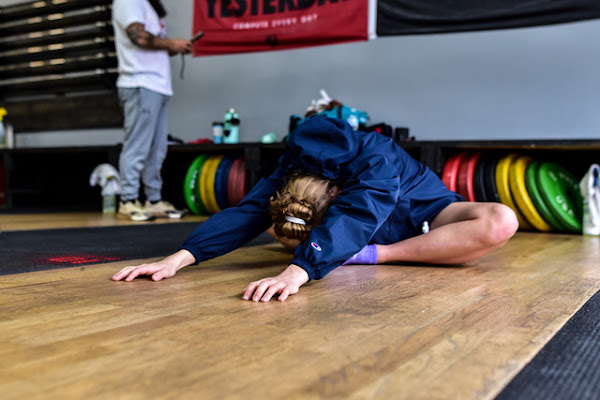For who? Road warriors, executives, competitive athletes, professional athletes
For what? Recovery, jet lag, insomnia, travel


Over the decades of intercontinental travel between Japan, Europe and the USA, KAATSU Global has developed ways to use the KAATSU Cycle mode in order to avoid or mitigate jet lag when crossing many time zones.
Travelers can follow these basic protocols:
1. Do Progressive KAATSU Cycle sets before boarding the airplane at the departing airport.
2. Remain well hydrated during the flight.
3. Do a series of KAATSU Cycle sets before or after the in-flight meal.
4. Do a series of KAATSU Cycle sets before landing.
5. Do a series of very gentle or passive KAATSU Cycle sets in the hotel before bedtime in the new location.
6. Use conservative (low) pressures; avoid medium and higher pressures unless you are a very experienced user.
The KAATSU protocols are separated into 3 different recommendations based on our intercontinental travel experiences over the last 20 years.
Assumption: KAATSU Cycle sets are done in the economy-class section. In cases where the KAATSU user is in business class or first class, there is much more space and comfort to do KAATSU, especially on one's legs.
Short-haul Flights (under 3 hours)
Examples: Heathrow to Amsterdam, Heathrow to Madrid, Los Angeles to San Francisco, New York to Washington DC, Tokyo to Fukuoka
Note: generally, the short-haul flights are not exceeding 2 time zones.
Recommendations:
1. Do 2-4 KAATSU Cycle sets in morning and/or at the airport. It can be done on your legs and/or arms as you prefer.
2. For economy-class short-haul flights, the seats tend to be the most narrow and the flights tend to be the most crowded. Under these conditions, the KAATSU Air Bands are more difficult to put on your legs. Focus on doing KAATSU Cycle sets on your arms in this case.
3. If a morning flight, do 2-6 KAATSU Cycle sets on your arms shortly after leveling off.
4. Stay well hydrated.
5. After KAATSU Cycle sets are completed, you can rest, work, listen to music, or watch movies for the rest of the flight.
6. Do 2-6 KAATSU Cycle sets on way to hotel or once in hotel. If at the hotel, doing KAATSU Cycles on the legs feels good while unpacking and getting ready to go out.
Medium-haul Flights (3-6 hours)
Examples: London to Moscow, London to Athens, Los Angeles to New York, New York to Washington DC, Tokyo to Seoul
Note: generally, the medium-haul flights are exceeding 3-4 time zones.
Recommendations:
1. Do 2-6 KAATSU Cycles in morning and/or at the airport. It is best to do KAATSU Cycles first on the arms and then on the legs.
2. For economy-class medium-haul flights, the seats tend to be the more narrow than longer flights. The flights tend to be the crowded. Under these conditions, the KAATSU Air Bands are more difficult to put on your legs. Focus on doing KAATSU Cycle sets on your arms only.
3. If a morning flight, do 2-6 KAATSU Cycle sets on your arms shortly after leveling off.
4. Always stay well hydrated while staying away from alcohol.
5. After initial set of KAATSU Cycle sets are completed, you can rest, work, listen to music, or watch movies for the rest of the flight.
6. You can also do KAATSU Cycle sets again at your hotel before going to bed. At the hotel, doing KAATSU Cycle sets on the legs feels good while unpacking and getting ready to go out or to bed.
Note: avoid doing vigorous exercises with the KAATSU equipment before bedtime - this will stimulate adrenalin, not your parasympathetic system.
Long-haul Flight (over 6 hours)
Examples: London to Washington DC, London to Dubai, Los Angeles to Tokyo, New York to Rio de Janeiro, Tokyo to Singapore
Note: generally, the long-haul flights are exceeding 5-6 time zonesand many times, many more time zones
Recommendations:
1. Do 2-6 KAATSU Cycles in morning and/or at the airport. It is best to do KAATSU Cycle sets first on your arms and then on your legs.
2. For economy-class long-haul flights, the seats can have enough room to do KAATSU Cycle sets on your legs. If possible and if comfortable do KAATSU Cycle sets on your arms first and then your legs.
3. If a morning flight, do 2-6 KAATSU Cycle sets on your arms shortly after leveling off. Follow up with 2-6 KAATSU Cycles on your legs.
4. Always stay well hydrated preferably with water (no alcohol).
5. After initial set of KAATSU Cycle sets are completed, you can rest, work, listen to music, or watch movies for the rest of the flight.
6. It is also best to do KAATSU Cycle sets again towards the end of the flight with the same protocol. If not possible, do once in hotel before going to bed. At the hotel, doing KAATSU Cycle sets on the legs feels good while unpacking and getting ready to go out.
Note: avoid doing vigorous exercises with the KAATSU equipment before bedtime - this will stimulate adrenalin, not your parasympathetic system.
Additionally, a few other posts on this subject
here,
here, and
here.
Copyright © 2014 - 2021 by
KAATSU Global
 Recovery from jet lag or travel fatigue can be addressed with repeated KAATSU Cycle sets.
Recovery from jet lag or travel fatigue can be addressed with repeated KAATSU Cycle sets.











































